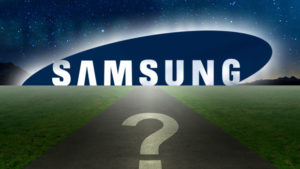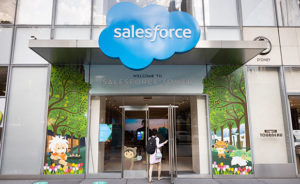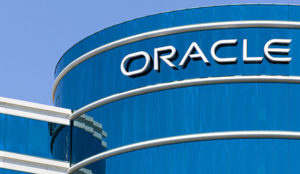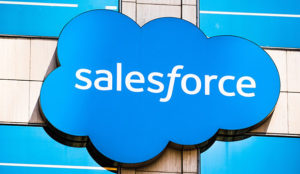The social media model has come under increased scrutiny following revelations of data misuse and news of executives reneging on some security commitments. People expecting to change the situation will need to address how social media works.
This means changing not just the business model, which describes how a social media business makes money, but the fundamental technology model too.
The Business Model
You can trace some of social’s troubles to the free use and advertising business model. Leveraging it, the social media companies have developed businesses dependent on easily collecting, dredging through, and analyzing user data. They then sell their insights to vendors eager to approach the public with enticing offers.
Users more or less sign away rights to their data stored on social media systems in return for free use. However, promises made by some social media companies to maintain data privacy have been blithely ignored, even by the businesses that first made the promises.
Free use and advertising are a potent combination that gives social vendors ample amounts of data to leverage. Much has been written about how social applications were used as designed to stir up strong passions during elections, and how unscrupulous parties used social platforms to target specific voter groups.
Social media’s troubles were baked in at conception, both in the business and technology models. It’s doubtful that the situation will improve until social vendors change approaches, starting with these models. That will be difficult, because the current business and technology models are very lucrative.
Still, what would new models actually look like if they’re not based on selling insights into huge numbers of users’ data, like the current ones? The most likely models, which also have some issues to address, likely would be some form of subscription coupled with a more targeted approach to the way users communicate, which I’ll call a “notification model” (see below).
Subscriptions: Back to the Future
We’re all accustomed to subscriptions, and some articles refer to the “Subscription Economy” when dealing with car leases, cellphones, shaving supplies and pet food, plus a lot more. However, moving from a model that’s free to the user — whatever you call it — to one that requires even a modest payment would require a heavy lift by the vendor community. Luckily, the history of the software industry shows that instituting a payment model, while challenging, can be done.
Back in the 1980s, PC software was considered a separate thing from software that ran on mainframe computers produced by big companies. PC developers were considered hobbyists, and their claims to copyrights were ignored consistently.
On the other hand, many felt they were releasing applications to community members with similar interests who might, over time, help to improve their products and release those improvements back to the community.
That model was unsustainable, though. As more people joined the PC revolution, fewer of them knew how to code. They needed help with bugs or just to understand how a given app worked. With little revenue for the developer, there was little or no documentation, and virtually no one to call for help.
Bill Gates, cofounder and CEO of Microsoft, had a different vision. He promoted the idea of PC software licensing. Gates was right, but early. He could charge for a diskette containing his operating system, MS-DOS, but initially he couldn’t do much about someone copying the diskette and simply distributing it to friends. The same was true for PC applications, though it was at least possible to ration service to users who had unique serial numbers.
It would take years for software to reach a point where developers could be certain that they were receiving what was due. Eventually, key codes, cloud computing, and other approaches made it virtually impossible to steal access to applications. So, over time and with changes in business and technology models, software became secure and profitable.
If this worked with PC software, something similar could work to make social media safer and more profitable, beyond using the free use and advertising model. For instance, schemes are already available to support different user types.
Family plans first deployed in the cellphone industry could cover kids and others not able to pay for use. Why not in social media? A free service could still exist, though its functionality might be limited — such as the number of connections a free user could make. Many downloadable apps for mobile devices operate this way.
While we’re at it, wouldn’t it be good if you knew for sure who was posting what? Requiring people and organizations to use their real names and to identify themselves would be a great place to start. Denying access to people trolling and otherwise abusing the systems ought not be hard. It’s not too much to ask who is riling up the populace.
So, changing the business model to subscriptions and implementing a modicum of identification enforcement are the first things that social media companies could do to reduce or even eliminate data theft, bullying, and other abuses common in social media today. Another necessary change we can contemplate is replacing the use model.
Notifications and Dunbar’s Number
The current social media use model celebrates generating large or even huge bases of followers. For instance, celebrities easily can have millions of followers, and while that’s nice for personal gratification, it falls short of the original intent of social networking, which was maintaining real relationships through bidirectional communication with friends.
In the 1990s, British anthropologist Robin Dunbar researched the issue of maximum human relationships and made an intriguing finding. Dunbar suggested that an average human being could maintain relationships with about 150 people. In colloquial terms, Dunbar described what would become known as the “Dunbar Number” or “Dunbar’s Number” as “the number of people you would not feel embarrassed about joining uninvited for a drink if you happened to bump into them in a bar.”
Social media made reaching the Dunbar Number easy, but it also made pushing beyond that number trivial — hence, the celebrities with millions of followers. Of course, even with good technology, there’s no way to keep up a relationship with a million or even a thousand followers, and using social media for this purpose merely moves the goalposts and applies the technology unrealistically.
Having an exaggerated following reduces social networking’s use from two-way communication to one-way broadcasting. There’s nothing inherently wrong with that, but if what you really want is to foster a relationship through information exchange, it means that social communication is degraded.
Therefore, if keeping a dialog going with your Dunbar buddies is a purpose for using social media, then there might be other approaches that can do the job better. One such alternative is notification apps. No matter what, you’ll need to get more realistic about how many “friends” you keep.
Think of notifications as similar to a post on Twitter or Facebook — but with the difference being that your message is not limited to 280 characters, and only the people you target get to see your message. They’re expected to respond, too.
Notifications apps are used by individuals who want to keep a few people “in the loop” about an issue, a project, or a discussion thread. This could include business people engaged in a project, lawyers working on a case, a medical team working 24/7 on a specific patient, your softball team, or the people attending a wedding.
You can do all that with email, Twitter or Facebook, but they have inherent limitations, such as privacy, content length, and something I’ll call “asynchronicity.” Social media, email and many other communications media all benefit from enabling individuals to interact in their own time, or asynchronously. However, without extra effort, none is a good channel for letting the rest of the group know that a message has been received.
In all the examples above and many others, it’s critical to know your message got through. While we’re at it, let’s add the idea of history — as in keeping an easy-to-read message thread along with comments from other members of the group. So for reasons of privacy, group coherence, history and making asynchronicity work, subscribing to notifications apps might be a better approach than conventional social media.


Combining Business and Technology Models
Let’s review.
Free is never really free, and with social media we discovered that in exchange for free use of the medium, we became the product that vendors served up to advertisers. There’s no judgment here — advertising to the “right” demographic has been an art form for many decades. Still, the current technology and business model have made it far too easy for bad actors to target unsuspecting people.
Communications needs have changed too. Social showed us what’s possible, and intuitive users have been pushing the envelope. Other business and technology models already exist, and it’s our job to select ones that better address our needs for things like privacy and security. Converting some of the market to those models will be the work of many years. In the end, multiple business and technology models will coexist, with users selecting the ones most appropriate for their needs.
The subscription and notification models offer great promise in situations where it’s less important to broadcast to thousands or millions of followers. Where individuals really want to manage relationships with groups that are more Dunbar-like, notifications might make more sense. These situations never were envisioned clearly by social media’s pioneers.
My Two Bits
The story of technology for 50 years has been about enhancing a core idea that resulted in products for ever-more-refined uses as those uses are discovered. You can’t deny that a modern mobile phone is a computer able to access the telephone system and the Internet. Further, it can make and receive content in a variety of file types like photos and music.
Today’s pocket-size mobile phone is a long way from the room full of gear that once was used just to manage the general ledger. Many of us now have multiple computers in our lives designed for discrete purposes. That’s just the nature of a product lifecycle.
The same evolution currently is taking place with social media. With social media, we once had a single technology model capable of doing many things, but we’ve learned that this model is better at some things than others. As a result, continuous innovation has spawned more product types (like notifications) and more refined ways to use them.
Don’t think that the current crop of social media products will disappear anytime soon. They’ve established an important niche. It’s just that it is no longer the only viable niche.
It’s reasonable to believe that we’re entering a new social communications era. We’ve solved the problem of communicating with the whole world, more or less. It’s now time to turn our attention to communicating with just the changing list of special individuals who matter to us in a particular moment.















































